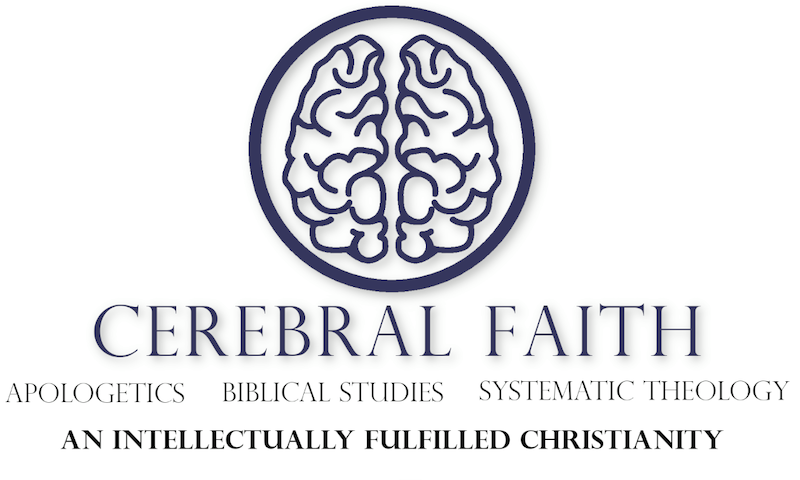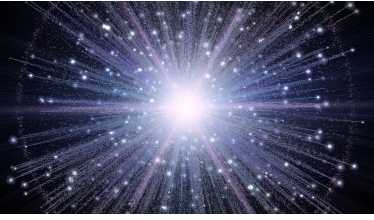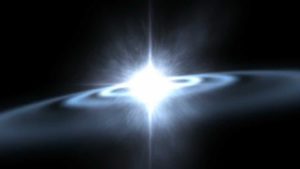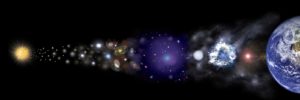Premise 1: Whatever Begins To Exist Has A Cause.
Premise 2: The Universe Began To Exist.
This premise has four lines of evidence in its favor. Two of them are scientific arguments and the other two are philosophical. For the sake of brevity, let’s just look at the two lines of scientific evidence.
Scientific Confirmation 1: The Big Bang Theory
Albert Einstein, in the early 1900s, presented his General Theory of Relativity.6 Einstein’s equations predicted a universe that was in a constant state of either expansion or contraction. Einstein wasn’t fond of the implications of his theory, so he added a “fudge factor” to his theory to avoid those implications.7
During the 1920’s, the Russian mathematician Alexander Friedman and the Belgian astronomer Georges Lemaitre managed to independently formulate models of the universe that predicted an expansion.8
After that, in 1929, the American astronomer Edwin Hubble discovered that the light coming from distant galaxies appeared to be much “redder” than it should be. Now, what do I mean when I say that Edwin Hubble saw that the light from the distant galaxies appeared redder than they should have been? In physics, a red shift is when light or other electromagnetic radiation from something has a wavelength that is stretched to the point that its light goes over to the red side of the light spectrum. The galactic red shifts are an example of The Doppler Effect. The Doppler Effect is a change in frequency or wavelength of either light or sound caused by the motions of the source itself to the observer of the source. Let me give an example of the Doppler Effect in action. Let’s say you’re standing on the side of the road and you hear a race car approaching at a constant speed. As the car gets closer and closer to you the pitch (or tone) of its engine sounds the same, but once the car passes you the pitch of the engine changes and sounds lower than it did when it was approaching you. This is because as the race car approaches you, the sound waves are closer together (shorter wavelength), but as it moves away from you, the sound waves are farther apart (longer wavelength).
Well, Hubble noticed this same sort of stretching in the light shining from the distant galaxies. Since the light waves were being stretched, Hubble concluded that the galaxies are moving away from us, and the reason that they’re moving away from us is that the universe is expanding.9 Now, for the first time, we finally had empirical evidence predicted by the theoretical work of Einstein, Friedman, and Lamaitre.
This had astounding implications. The fact that the universe is expanding meant that the universe had an absolute beginning. How so? Because if the universe is getting bigger and bigger as it gets older and older, then it must have been smaller in the past.
Lee Strobel, in the film The Case For A Creator, gives this illustration to help us understand the implications of an expanding universe. Imagine the expansion of the universe is being played on a film projector. As the film runs forward, you see the universe expand as all of the matter and energy grows farther apart as time moves forward. The universe would get bigger and bigger as the film continues to run forward. But what would happen if you pressed the rewind button on the projector? In this case, you would see the universe get smaller, and smaller, and smaller, until the universe becomes smaller than the period at the end of this sentence. Rewind the expansion even farther back than that, and the universe reaches a point of infinite density (which is just another way to say that it began from nothing). This conclusion was drawn by what scientists call “backward extrapolation”.
The universe began expanding from a point of infinite density about 14 billion years ago, in a violent and rapid explosion-like expansion! This event that marked the beginning of the universe was dubbed by Fred Hoyle “The Big Bang Theory”.10
We have an abundance of scientific evidence for The Big Bang Theory. Aside from the theoretical and empirical evidence for the universe’s expansion, there are other pieces of evidence as well. For example, the abundance of “light elements” in the universe supports The Big Bang Theory. Astrophysicists Deborah and Loren Haarsma explain that “The third major piece of evidence is the amount of helium in the universe. The ordinary matter in the universe is about 75 percent hydrogen, 24 percent helium, and 1 percent other elements. Why this percentage and not some other ratio? … Even in a universe billions of years old, the fusion in stars happens much too slowly to account for this much helium. Using The Big Bang model, astrophysicists calculate that the conditions of the universe about three minutes after The Big Bang were very similar to the interior of a star and just right for fusion reactions. The temperature and density of the hydrogen gas allowed it to fuse into helium and into trace amounts of Deuterium and lithium. The calculations of The Big Bang model even make precise predictions for the relative percentages of helium, deuterium, and lithium that would be produced. The model predicts that about 24 percent of the gas would be helium, in agreement with what astronomers observe.”11
Additionally, scientists predicted that if the universe is expanding from a big bang, then there should be residual radiation pervading the cosmos. This residual energy was confirmed by accident when Arno Penzias and Robert Wilson were experimenting with the Holmdel Antenna. Everywhere they turned the antenna, they picked up static. Initially, they thought it was bird droppings that was causing the static, so they removed the bird droppings. However, they were still picking up the static. It turned out the static was the cosmic microwave background radiation predicted by the big bang theory! Penzias and Wilson won a Nobel Prize for this discovery.12
Fourteen billion years ago, matter, energy, space, and time came into being!
Scientific Confirmation 2: The Second Law Of Thermodynamics
In addition to the evidence for the Big Bang theory, we have a second scientific confirmation of the beginning of the universe. According to the second law of thermodynamics, processes taking place in a closed system always tend toward a state of equilibrium, and it also transfers heat from hot bodies to cold bodies.13 This law is the reason that the ceramic heater in my bedroom keeps the entire room warm at night in the winter. The second law causes the heat to spread throughout the entire room rather than being confined to a corner. The heat from the ceramic heater travels to the colder body (i.e. the room). This is why I sometimes smile when people say “Close the door! You’re letting the cold in!” I’m like “Dude, do you even science? The second law of thermodynamics causes heat to travel from hot bodies to cold bodies, not the other way around!” When you leave the door open in the winter, the heat escapes, the cold doesn’t get in.
Now, the second law of thermodynamics is relevant to the Kalam argument because of what entails when the law is applied to the universe as a whole. The universe is a gigantic closed system, no energy is being fed into it from the outside (I say this on the basis of the first law of thermodynamics).14
The astrophysicist Kevin Pimbblet writes about the implications the second law will have in an article on Phys.org titled “The fate of the universe—heat death, Big Rip or cosmic consciousness?”.
This is what Kevin Pimbblet wrote:
“As the universe carries on expanding, we will no longer be able to observe galaxies outside our local group (100 million years from now). Star formation will then cease in about 1-100 trillion years as the supply of gas needed will be exhausted. While there will be some stars around, these will run out of fuel in some 120 trillion years. All that is left at that point is stellar remnants: black holes, neutron stars … One hundred quintillion (1020) years from now, most of these objects will be swallowed up by the supermassive black holes at the heart of galaxies.
In this way, the universe will get darker and quieter until there’s not much going on. What happens next will depend on how fast the matter in the universe decays. It is thought that protons, which make up atoms along with neutrons and electrons, spontaneously decay into subatomic particles if you just wait long enough. The time for all ordinary matter to disappear has been calculated to be 1040 years from now. Beyond this, only black holes will remain. And even they will evaporate away after some 10100 years.”15
Now, this raises a very interesting question. If the universe did not begin to exist, then it’s been chugging away its energy from all eternity. If the universe has only a finite amount of energy and it’s been chugging away its energy for an infinite amount of time, then why is there still useable energy left? Why are there still stars forming? Why are there still atoms decaying into subatomic particles? This stuff should have stopped an infinite amount of time ago.16 And yet, it hasn’t! What explanation for this exists other than that the universe hasn’t always been here?
Here’s an analogy: if you were walking through the forest and found a flashlight on the ground that was still shining light, what would you conclude? Knowing that the batteries only had a finite amount of energy, you would conclude that the flashlight hasn’t been shining from eternity past. If it had been shining from eternity past, then the flashlight would have stopped shining long before you found it. That it still has some battery life left to it shows that it was turned on a finite time ago.17
We therefore have very powerful scientific evidence that the universe began to exist. Thus, premise 2 is confirmed. What’s more, this evidence isn’t something that you’ll only read about in “creation science” journals and articles. This evidence is mainstream science. In affirming that the universe began to exist, I am standing with the scientific concensus. As the late Stephen Hawking put it, “Almost everyone now believes that the universe and time itself had a beginning at the big bang.”18
Conclusion: Therefore, The Universe Has A Cause.
Given the truth of the 2 premises, the conclusion follows logically and necessarily. The universe has a cause of its existence.
The cause of the universe must be:
Spaceless – Because space came into being and did not exist until this cause brought it into existence, the cause cannot be a spatial being. It must be spaceless or non-spatial. You cannot be inside of something if you are that something’s cause. You cannot be inside of something if that something did not exist until you brought it into existence. The builder of a house, for example, cannot be inside the house prior to building it, since the house did not exist until he brought it into existence.
Timeless – Since time did not exist until The Big Bang, the cause cannot be inside of time. It must be a timeless being.
Immaterial – The cause’s non-spatiality entails immateriality. How? Because material objects cannot exist unless space exists. Material objects have mass and therefore occupy spatial dimensions. If there is no space, matter cannot exist. This means that because the cause is non-spatial, it is therefore non-material.
Unimaginably Powerful – Because it created all matter, energy, space, and time out of nothing!
Supernatural – “Nature” and “The universe” are synonyms. Nature did not begin to exist until The Big Bang. Therefore, a natural cause (a cause coming, by definition, from nature) cannot be responsible for the origin of nature. To say otherwise would be to spout incoherence. You’d basically be saying “Nature caused nature to come into being.”
Uncaused – Given that the cause of the universe is timeless, the cause cannot itself have a beginning. To have a beginning to one’s existence entails a before and after. There’s a time before one existed and a time after one came into existence. But a before and after of anything is impossible without time. Since the cause created time, the cause therefore cannot have a beginning. It’s beginningless.
Personal – There are 3 reasons why the cause must be a personal entity.
First, this is an entailment of the cause’s immateriality. There are two types of things recognized by philosophers that are immaterial: abstract objects (such as numbers, sets, or other mathematical entities) or unembodied minds. Philosophers realize that abstract objects, if they exist, they exist as non-physical entities. However, abstract objects cannot produce any effects. That’s part of what it means to be abstract. The number 3 isn’t going to be producing any effects anytime soon. Given that abstract objects are causally impotent, it therefore follows that an unembodied mind is the cause of the universe’ beginning.
Secondly, if the cause of the universe wasn’t personal, then the Big Bang would have happened infinitely long ago and hence we would have an eternally old universe instead of one that has an age of about 14 billion years. In his book “The Holman Quicksource Guide To Christian Apologetics”, Doug Powell gives an excellent illustration to make this point, “Note that this description only describes what is necessary for the big bang to work. But if there is such an entity as the one described, it is still not sufficient for the creation of the universe. Just because this entity does exist does not mean the universe must exist. Something is still missing — intentionality, a will to make it happen. A car that has a working engine, a healthy battery, a properly connected electrical engine, and is full of gas has all the necessary conditions for running. Although they have the necessary conditions, they lack the sufficient conditions. Cars that are moving down the street have necessary and sufficient conditions for running — that is why they are moving. What do the moving cars have that the parked cars do not? They have drivers. And what is a driver? It is a being that is not part of the car, has the power to start the car, and does not rely on the car for its existence, …and has the will … to start the car. … Thus, the universe needs a driver, an intelligent agent that is capable of choosing whether to create the universe or not.”19
In Powell’s car illustration, the reason the car was started a finite time ago is that a person got in and purposefully turned the ignition. The only scenario in which the necessary and sufficient conditions can be present from eternity past, yet the effect not be just as eternal as its cause is if the deciding factor in bringing about the effect is a free choice.
The third reason why the cause must be personal has been well explained by the philosopher Richard Swinburne. Swinburne points out that there are two types of explanations: scientific explanations and personal explanations.20
Scientific explanations have to do with the laws of nature, while personal explanations have to do with the desire of persons. Imagine that you walked into your kitchen and find that the pot is boiling on the stove. You ask your roommate why it’s boiling. One way he could answer would be “The heat from the copper bottom causes the water molecules to vibrate more and more violently until they’re thrown off in the form of steam.” Sounds like the kind of answer Sheldon Cooper would give his room mate Leonard on an episode of The Big Bang Theory CBS Sitcom. Another way to answer your question would be a personal explanation. He could say “I put it on in order to make macaroni and cheese. Want some?” The Sheldon Cooper type answer is a scientific explanation. The latter is a personal explanation.
Swinburne argues that the explanation for why the universe sprung into being cannot be a scientific explanation. The reason is that The Big Bang was the origin of nature. Since nature came into being, there cannot be a natural/scientific explanation for why it popped into existence, but in that case, the only other possibility is that the explanation is personal; that is to say, someone wanted the universe to exist!
For these three reasons, I think we have good reason to believe in the personhood of the universe’s cause.
“But what about…?”
Perhaps you’re still not yet convinced that God exists because you have some objection to The Kalam Cosmological Argument that you think refutes it. In that case, I would recommend that you take a look at the other blog posts on this website about The Kalam Cosmological Argument. I have devoted many blog posts to refuting objections to the argument that various skeptics have lodged against it. Simply click on this URL –> https://cerebralfaith.net/category/the-kalam-cosmological-argument/
NOTES
6: Albert Einstein, “Die Feldgleichungen Der Gravitation”, Sitzungberichte der Koniglich, Preussischen Akademie der Wissenchafen,” 25 November 1915, pages 844-847 (the following includes this reference); Albert Einstein, “Die Grundlage der allgemen\inen relatavitatstheorie,” Annalen der physik 49, 1916, pages 769-822 [Lorentz et. al. The Principle Of Relativity, pages 109-164
7: Albert Einstein, “Kosmologische Betrachungn zer Allgemeinen Relativitatstheorie”, Sitzungberischte der Koniglich, Preussischen Akademie der Wissenchafen, February 8th 1917, pages 142-152. The English Translation can be found in The Principle Of Relativity by H.A Lorentz A. Einstein, H. Minkowski, and H. Weyl with notes by A. Sommerfield and translated by W. Perrett and G.B Jeffery (London, U.K: Methuen and Co. 1923), pages 175-188; See also this article for more background on Einstein’s “fudge factor”: Karen Wright, “The Master’s Mistakes,” Discover, September 30, 2004, discovermagazine.com/2004/sep/the-masters-mistakes .
8: See the article “Important Scientists: George Lamaitre (1894-1966), https://www.physicsoftheuniverse.com/scientists_lemaitre.html
9: Hubble, E. (1929). “A Relation Between Distance and Radial Velocity Among Extra-Galactic Nebulae”. Proceedings of the National Academy of Sciences.
10: See “Fred Hoyle Dies At 86; Opposed ‘Big Bang’, but Named It”, by Walter Sullivan, August 22nd 2001, New York Times, — https://www.nytimes.com/2001/08/22/world/fred-hoyle-dies-at-86-opposed-big-bang-but-named-it.html
11: Deborah and Loren Haarsma, “Origins: Christian Perspectives On Creation, Evolution, and Intelligent Design”, Faith Alive Christian Resources, pages 168-169
12: Partridge, R. B. (2007). 3K: “The Cosmic Microwave Background Radiation” (illustrated ed.). Cambridge University Press. p. xvii. ISBN 978-0-521-35808-8.
13: https://www.khanacademy.org/science/biology/energy-and-enzymes/the-laws-of-thermodynamics/a/the-laws-of-thermodynamics
14: The first law of thermodynamics says that matter and energy can neither be created nor destroyed. In other words, the amount of matter and energy in the universe is constant. There’s no new matter and energy being created ex nihilo.
15: From the online article “The fate of the universe—heat death, Big Rip or cosmic consciousness?”, September 4, 2015 by Kevin Pimbblet, — https://phys.org/news/2015-09-fate-universeheat-death-big-rip.html
16: I took this illustration from Frank Turek’s and Norman Geisler’s “I Don’t Have Enough Faith To Be An Atheist”, Chapter 3; “In The Begininning, There Was A Great SURGE”, pages 76-77, Crossway.
17: Hugh Ross, “Why the Universe Is the Way It Is”, (Grand Rapids, MI: Baker Books, 2008), 97
18:
19: Doug Powell, “Holman Quicksource Guide To Christian Apologetics”, Holman Reference, pages 44-45
20: Richard Swinburne, The Existence Of God, rev. ed. (Oxford: Clarendon, 1991), 32-48.
Share this:
- Click to share on Facebook (Opens in new window) Facebook
- Click to share on X (Opens in new window) X
- Click to print (Opens in new window) Print
- Click to email a link to a friend (Opens in new window) Email
- Click to share on Pinterest (Opens in new window) Pinterest
- Click to share on Reddit (Opens in new window) Reddit
- Click to share on LinkedIn (Opens in new window) LinkedIn
- Click to share on Tumblr (Opens in new window) Tumblr
Discover more from Cerebral Faith
Subscribe to get the latest posts sent to your email.





Fourteen billion years ago, matter, energy, space, and time came into being out of nothing!
–
Earlier you say nothing comes from nothing.
*From* nothing and *out of* nothing are not the same thing. To say something came *from* nothing is to say it came into being without a cause. To say something came into being *out of* nothing is to say it was made without any pre-existent material.
In 1996 a novelisation of Downtime by Marc Platt was published by Virgin Publishing as part of their Missing Adventures line.
If you’re in search of the very best comedy manhwa, then look no extra, for Greatest Property Developer is at present the greatest of all time (GOAT).
Management constructions and staff building methods, a few of which seemed like good concepts on paper however turned out to be unmitigated disasters in follow.